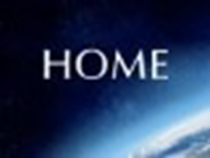HOME: There Really Is No Place Like….
 When you fly in a plane, hour after hour, over vast expanses of earth, it’s hard to think that something so vast is something we can use up. The fact is, however, that we are using up the planet, and there is no Planet B. We’re all indigenous people; indigenous to Earth. Hard as we’ve looked, we’ve not yet found its like, and even when we do, we’re not likely to be ready to beam ourselves across light years to get to it in time to escape the consequences of eating ourselves out of our planetary house and home.
When you fly in a plane, hour after hour, over vast expanses of earth, it’s hard to think that something so vast is something we can use up. The fact is, however, that we are using up the planet, and there is no Planet B. We’re all indigenous people; indigenous to Earth. Hard as we’ve looked, we’ve not yet found its like, and even when we do, we’re not likely to be ready to beam ourselves across light years to get to it in time to escape the consequences of eating ourselves out of our planetary house and home.
A beautifully filmed look at our planet — how it got to be like it is and how all that is changing — is available as “HOME,” a one-and-a-half hour video available on YouTube. It was shot entirely from the air over several years and produced with a lush sound track by the French environmentalist and aerial photographer Yann Arthus-Bertrand. It is being shown on television and as a free show in some NYC movie theaters.
It is at once beautiful, awesome, frightening and inspiring and makes some interesting points that could lead to personal action.
The film points out that twenty per cent of us use 80 per cent of everything produced; the other 80 per cent is stuck with trying to get by on the remaining 20 per cent. If us 20 per cent decided tomorrow to do with fewer goods — making do with what we have so we don’t have to shop for more — then less would have to be produced. Fewer minerals would have to be extracted and more land could be returned to making food.
You might also, without any vegetarian leanings, decide to eat less, or little, meat. It takes 100 gallons, on average, to make a kilo of grain; it takes 13,000 gallons to provide us with a kilo of meat. That’s not just what a cow drinks. It’s what it takes to grow, harvest and transport what it eats in a lifetime, and what it takes to keep it while it lives, butcher it, and distribute its parts. Some 80 per cent of the grain grown on the earth is used for cattle feed and biofuel. In the U.S. alone, the single biggest producer of food in the world, 58 per cent of all grain grown is used for animal feed. Talking animals, we’re not only talking cattle/beef: it’s also pigs/pork and chicken. All of these are grown in animal factories and fed mostly on grains that could feed the world.
Of course, for most of us, it would entail a big shift in how we approach food.That steak on your plate could look different after you think in these tems– or maybe not.
Arthus-Bertrand’s book, “Earth from Above” sold millions of copies and has produced videos for French TV. The first showing of “Home” in France on the eve of their 2009 elections apparently helped a number of green candidates get elected to the French parliament. See his bio in Wikipedia.







